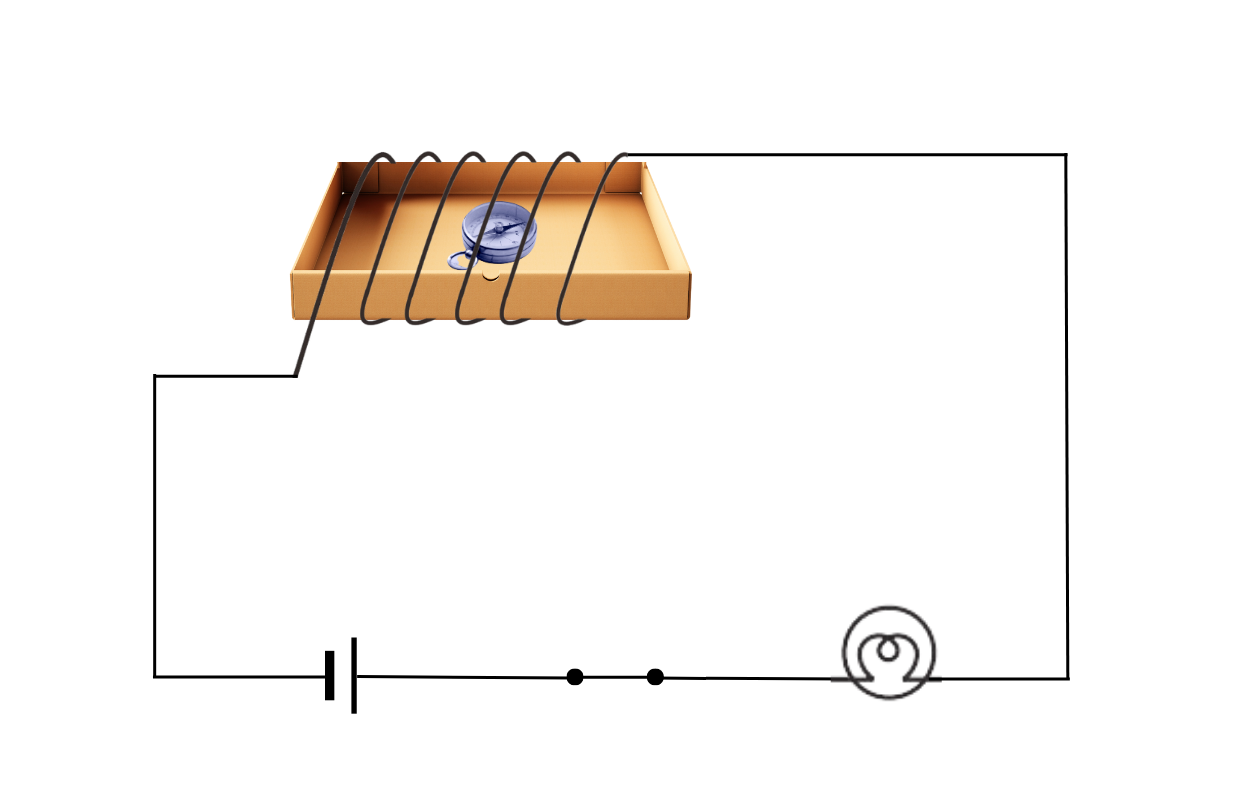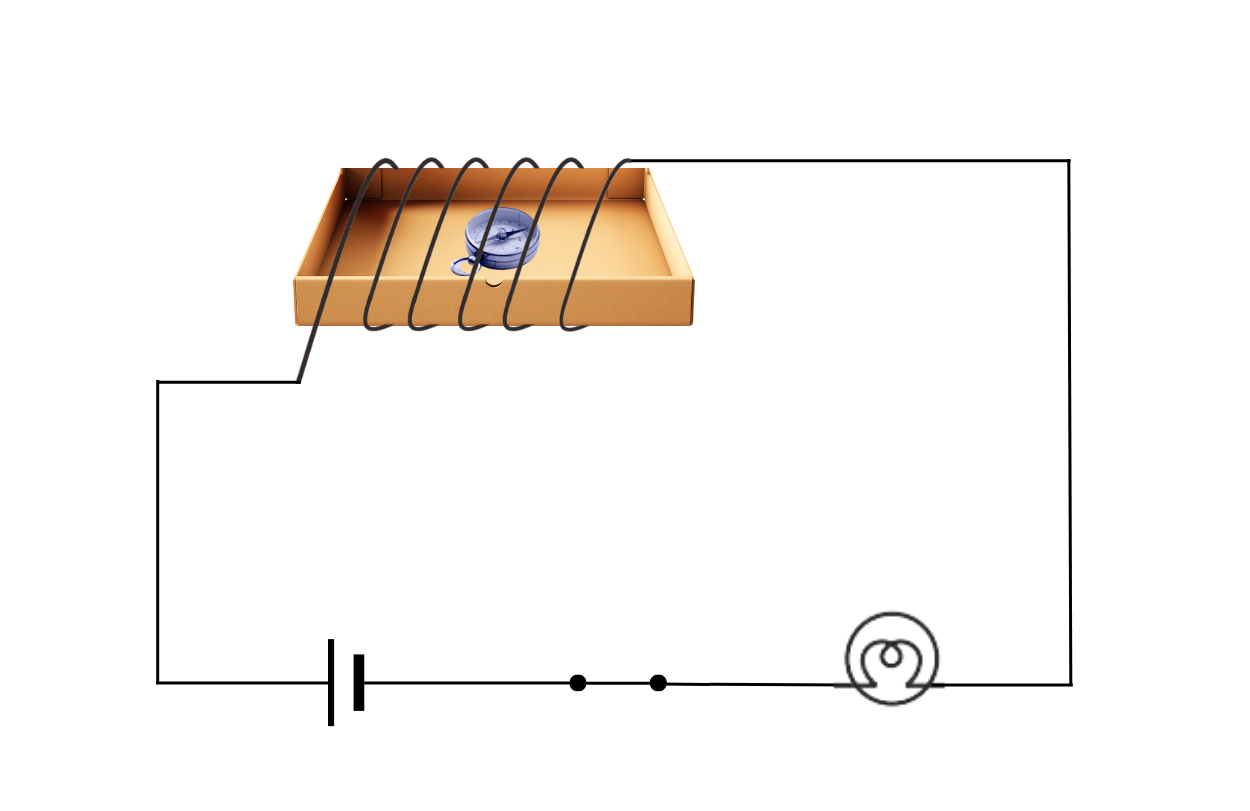1. Set up the circuit shown in Fig. 10.17 again. Move the key to ‘ON’ position and watch carefully in which direction the compass needle gets deflected. Switch ‘OFF’ the current. Now keeping rest of the circuit intact, reverse the connections at the terminal of the cell. Again switch ‘on’ the current. Note the direction in which the needle gets deflected. Think of an explanation.
Answer: The activity can be carried out as follows:
Aim: To determine if reversing the connections at the terminal of the cell changes the direction in which the needle gets deflected.
Materials Required: Matchbox, electric wire, compass needle, electric cell, switch.
Procedure:
(i) Take the cardboard tray from inside the discarded matchbox. Wrap an electric wire a few times around the cardboard tray and place a compass needle inside it.
(ii) Now connect the free ends of the wire to an electric cell through a switch as shown in Figure 1.
(iii) Now move the switch to ‘ON’ position and carefully observe the direction of deflection of the compass needle.
(iv) Then switch ‘OFF’ the current. Keeping rest of the circuit intact, reverse the connections at the terminal of the cell as shown in Figure 2.
(v) Now again move the switch to ‘ON’ position and now observe the direction of deflection of the compass needle.


Observations: You will notice that the compass needle deflects in the opposite direction when the connections at the terminals of the cell are reversed.
Conclusions:
- The compass needle gets deflected due to the magnetic effect of current in both cases.
- When the connections at the terminals of the cell are reversed the current flows in the opposite direction in the circuit. So, we conclude that the reason the compass needle deflects in the opposite direction in the second case is because the direction of current flow has been reversed.
- The electric current produces a ‘magnetic field’ around the wire and the direction of the ‘magnetic field’ reverses when the direction of current is reversed, which causes the needle to deflect in the opposite direction in the second case.
“Set up the circuit shown in Fig. 10.17 again. Move the key to ‘ON’ position and watch carefully in which direction the compass needle gets deflected. Switch ‘OFF’ the current. Now keeping rest of the circuit intact, reverse the connections at the terminal of the cell. Again switch ‘on’ the current. Note the direction in which the needle gets deflected. Think of an explanation.” – Solved.
Related Links:
Solution to Extended Learning Problem 1
Solution to Extended Learning Problem 2
Solution to Extended Learning Problem 3
Solution to Extended Learning Problem 4
Solution to Activity 10.1
Solution to Activity 10.2
Solution to Activity 10.3
Solution to Activity 10.4
Solution to Activity 10.5
Solution to Activity 10.6


